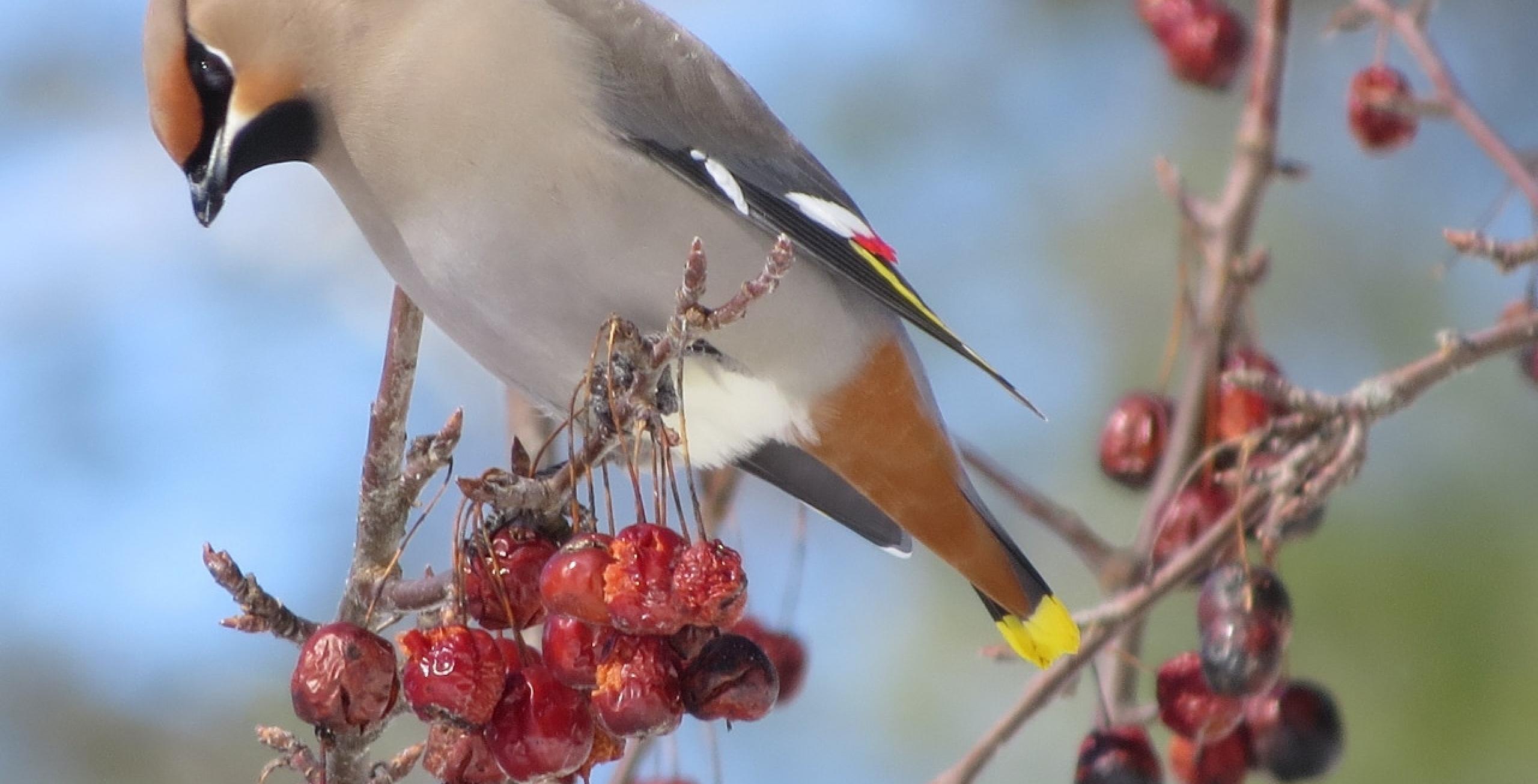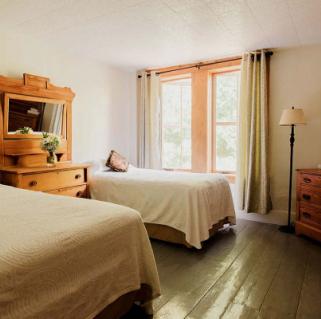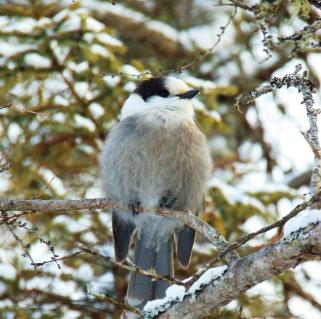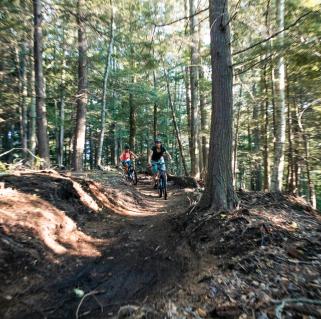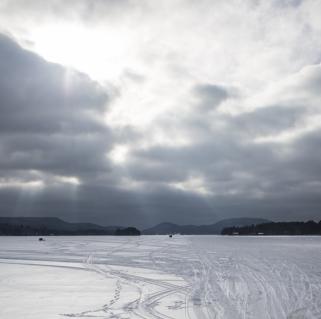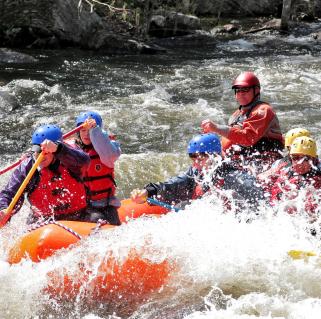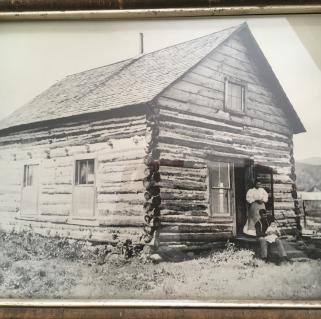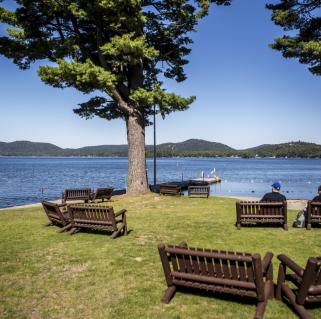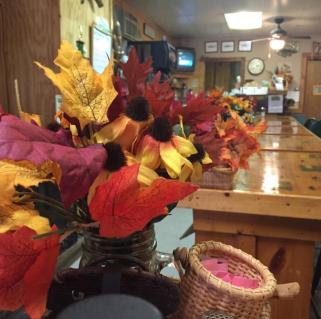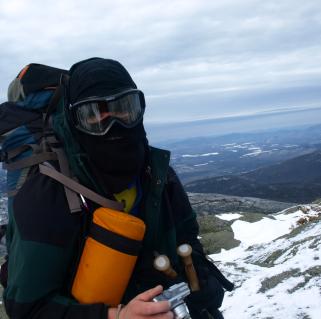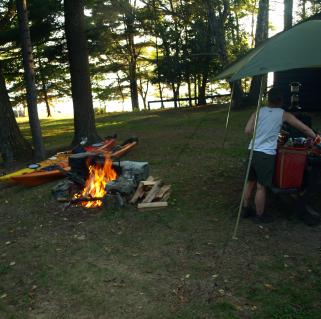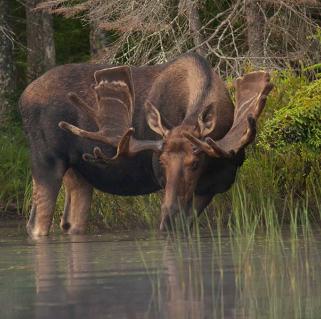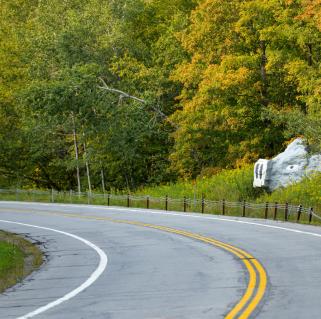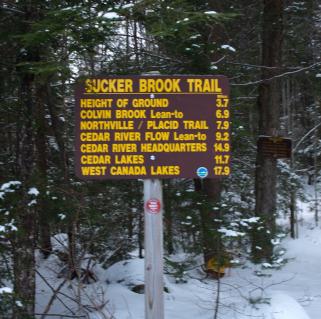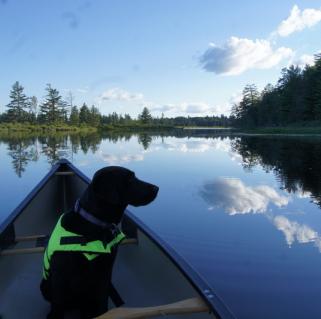As many of our region’s nesting bird species head south for the winter, some species that breed to our north also head south…into the Adirondacks! Each year, it is exciting to discover which species will “irrupt” into our region from the north. Some of these species show up every winter, while some are infrequent visitors. And sometimes, there are huge surprises, such as the solo Ross’s Gull, a species that nests in Siberia, which showed up in the central Adirondacks in the winter of 2017 and brought in countless birders from all over the U.S. and Canada!
Winter food and bird movements
Where bird species will move in winter can be fairly-reliably predicted based on food sources. Foods such as: seeds from coniferous (cones) and deciduous trees, fruits and berries in trees and shrubs, and small rodent populations. They all play a role in which species we might see in winter.
In September each year, I send the tree seed crop report for the Adirondacks and northern New York to Ron Pittaway, an ornithologist in Ontario. Each tree species’ seed crop is rated on a five-point scale (from bumper to poor). Reports are collected from all over Canada and the northern U.S. Just like a jigsaw puzzle, Ron sits down and pieces together the reports to see where food sources are located and where he predicts species may move as a result. His yearly “Winter Finch Forecast” is much awaited and published in myriad birding publications.
Last winter, the Adirondacks had a one-in-twenty year bumper cone crop on all the coniferous trees. As a result, huge numbers of Red and White-winged Crossbills irrupted into the area and nested in winter. This winter, as expected after the bumper year, the coniferous trees did not produce cones. But there is plenty of fruit and some deciduous tree species with seeds. Irruptive species are already arriving to take advantage of these food sources.
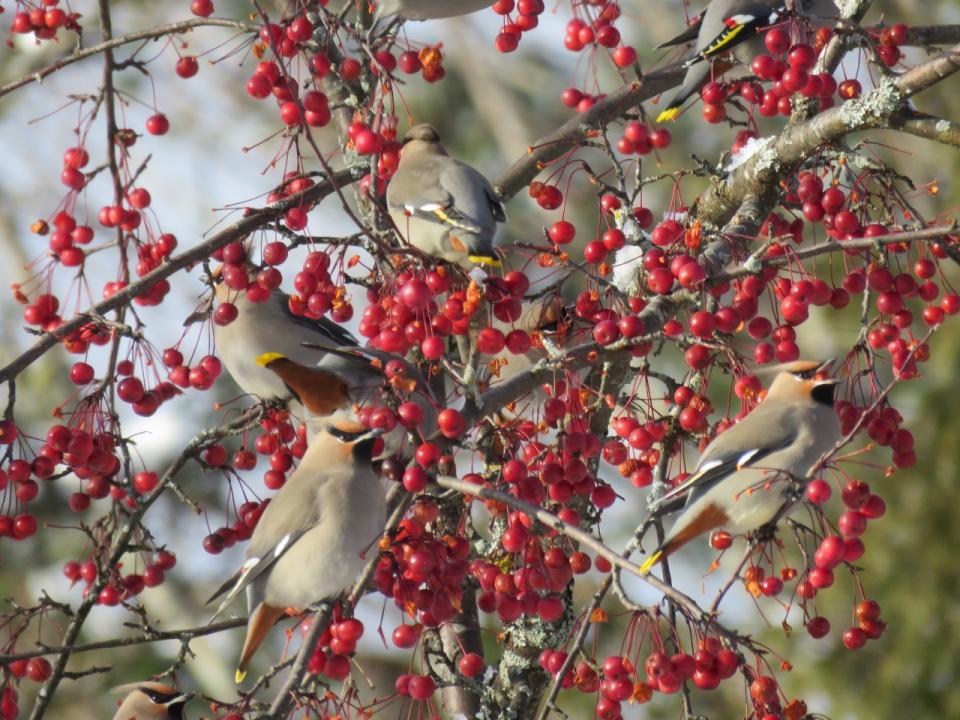
Fruit and seed eating irruptive species
An irruption is a migration of large numbers of birds to areas where they are not typically found, sometimes great distances from their normal ranges. Irruptions can occur on a predictable cycle or can be more irregular. Common Redpolls typically irrupt into the Adirondacks every other winter. Bohemian Waxwings irrupt nearly every winter, while Pine Grosbeaks show up irregularly every several years.
Bohemian Waxwings and Pine Grosbeaks have already moved into the region and are thrilling local and visiting birders!
Bohemian Waxwings nest in northwestern North America and are known to travel great distances in winter in huge flocks, often numbering into the thousands, for fruit. Irruptions occur in our region during most winters. Bohemian Waxwings eat berries, crab apples, and a favored food is Buckthorn berries. Buckthorn is an invasive plant species from Europe. Keep an eye on fruit trees in the villages and towns of the Adirondacks for flocks of beautiful Bohemian Waxwings and listen for their high-pitched, rolling trill vocalizations.
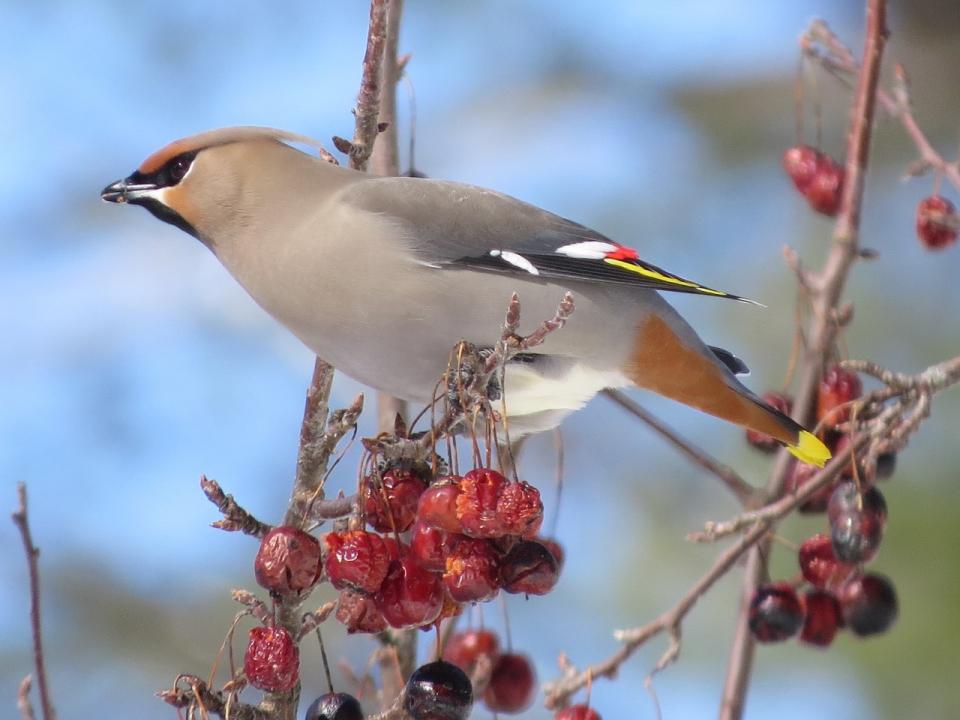
Pine Grosbeaks, a large finch species, nest across the subarctic and boreal forests of Canada, west into Alaska, and in mountainous areas of the western U.S. They irregularly irrupt south of their breeding range into the Adirondacks and northern New York state. Their primary food sources in winter are fruits and Ash tree seeds. With flocks being reported all over the Adirondacks, it looks like a terrific irruption for Pine Grosbeaks this winter! Adult males are a beautiful red color and females are mostly gray with a yellowish head and rump.

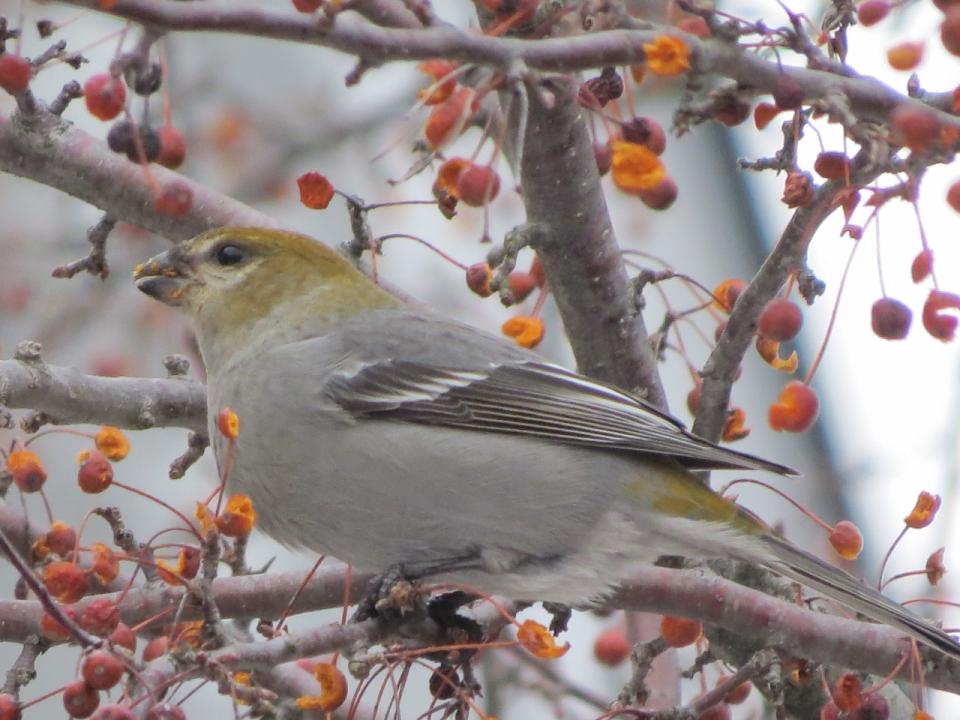
Pine Grosbeaks give lovely, musical call notes and warbles. In Newfoundland, they were affectionately given the nickname “mope” due to their lethargic and tame behavior, sitting in the same tree for long periods of time as they slowly feed. As with Bohemian Waxwings, keep an eye on fruit trees in the villages and towns of the Adirondacks for Pine Grosbeaks. Use binoculars since they can easily be missed as they sit very still and blend in with the colors of the fruit trees. Also keep an eye on Ash trees. Pine Grosbeaks regularly vocalize and they are often heard more than seen. Similar to other finch species, Pine Grosbeaks will also take grit from the roadways, and that can also be a great place to view them.

Common Redpolls, a typically every other year irruptive finch species, are predicted to irrupt this winter. It has been unusually absent from our region for several years now. They nest across the arctic and subarctic regions of Canada and Alaska. Birch catkins and other small seeds are their favored foods. Common Redpolls often arrive in large flocks and visit feeders for thistle (or nyjer) and sunflower seeds. I regularly have 300 to 500 visit my Long Lake feeders in irruptive winters. Often, in large flocks of Common Redpolls, there may be a few sought-after Hoary Redpolls mixed in. Hoary Redpolls breed in the high arctic regions of Canada and Alaska.
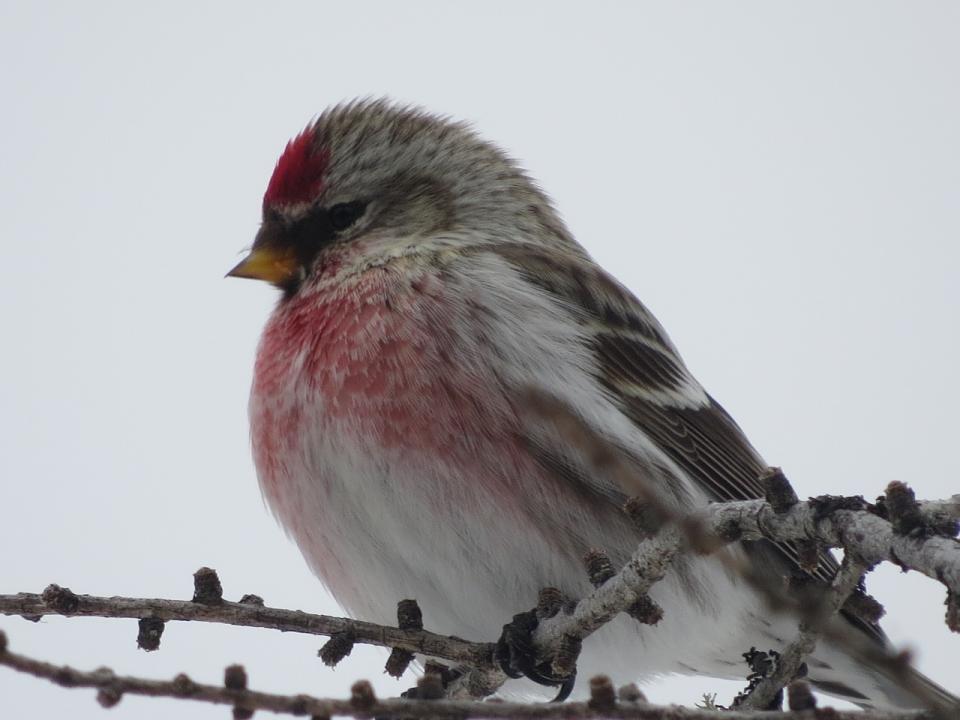
Snow Buntings and Northern Shrikes also spend the winter in the Adirondacks and surrounding valleys each year. Snow Buntings, a species of the high arctic, eat weed seeds (and the cracked corn I put out for Wild Turkeys).
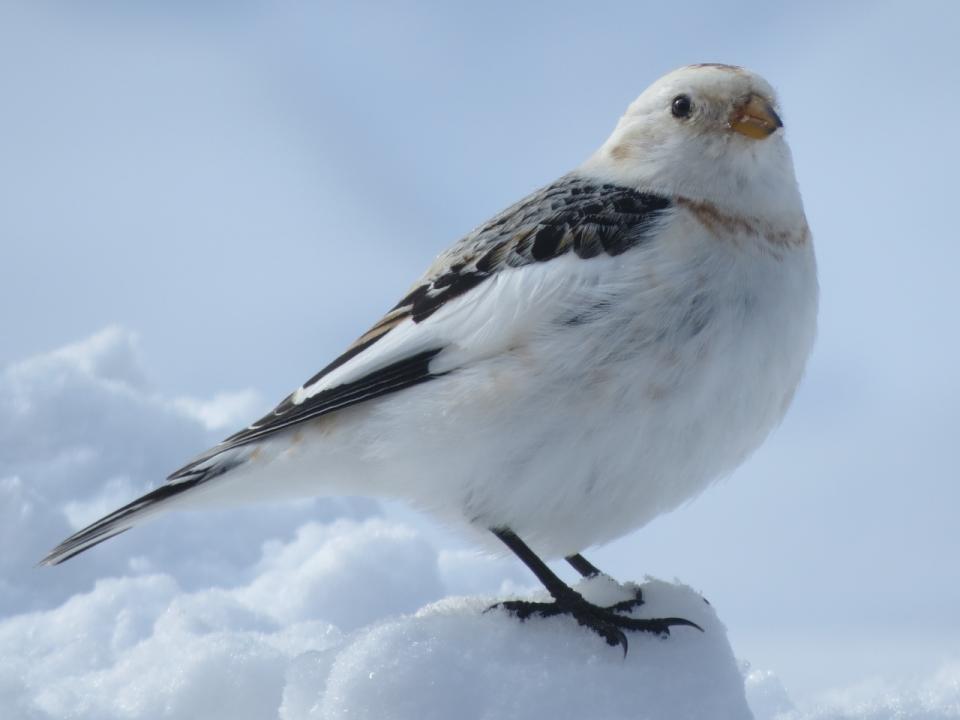
Northern Shrikes are predatory songbirds that hunt small mammals and birds in winter. Occasionally, they show up at bird feeding stations to hunt feeder birds. Northern Shrikes, solitary in winter, will often remain in one location, which is often a wet, open habitat with plenty of small mammals to hunt.
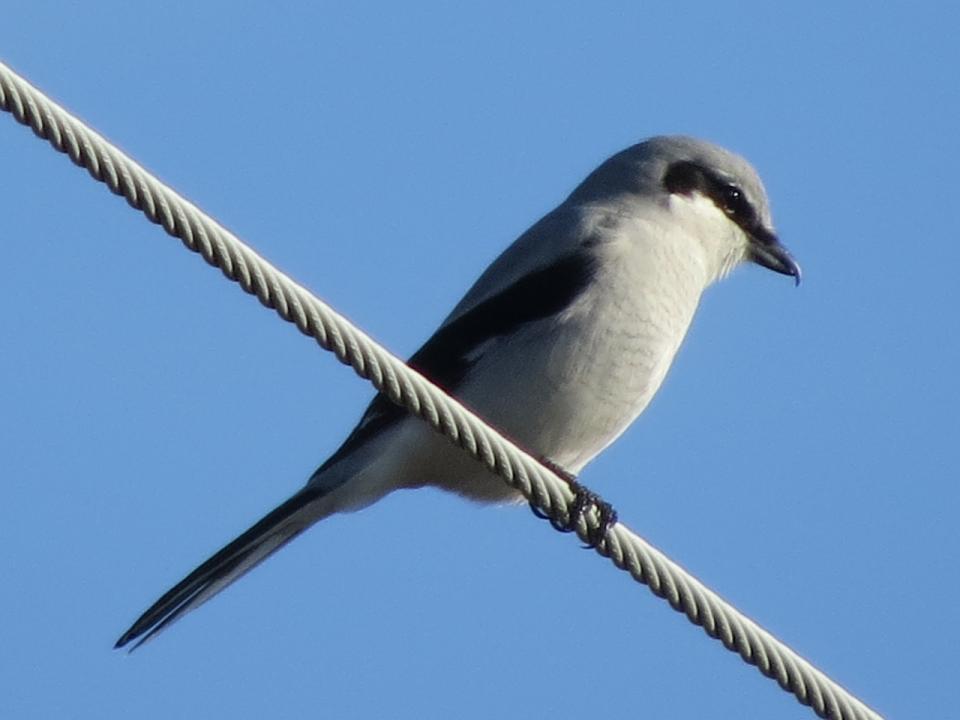
Year round species
American Robins and Cedar Waxwings, both regular nesting species in our region, can also be found in fruit trees during winter.
Evening Grosbeaks, another nesting bird in our region, have been showing up at bird feeders and some may stay through the winter.
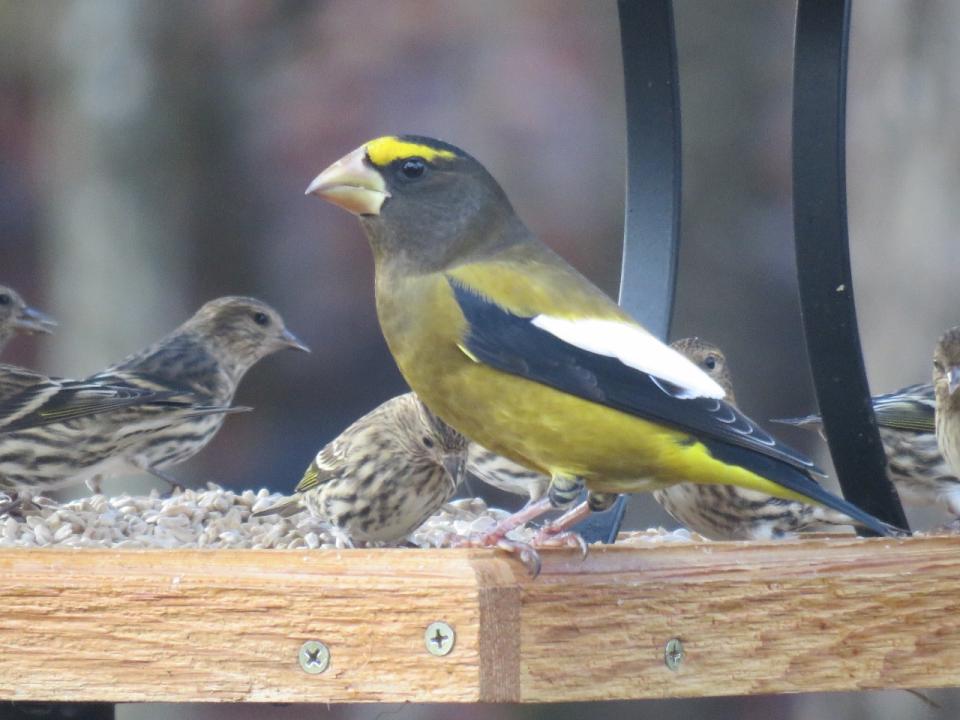
Many other year-round species can be viewed including the sought-after “boreal trio” species: Black-backed Woodpecker, Canada Jay (Gray Jay was renamed to Canada Jay in July), and Boreal Chickadee, which bring many visitors to our region all year.
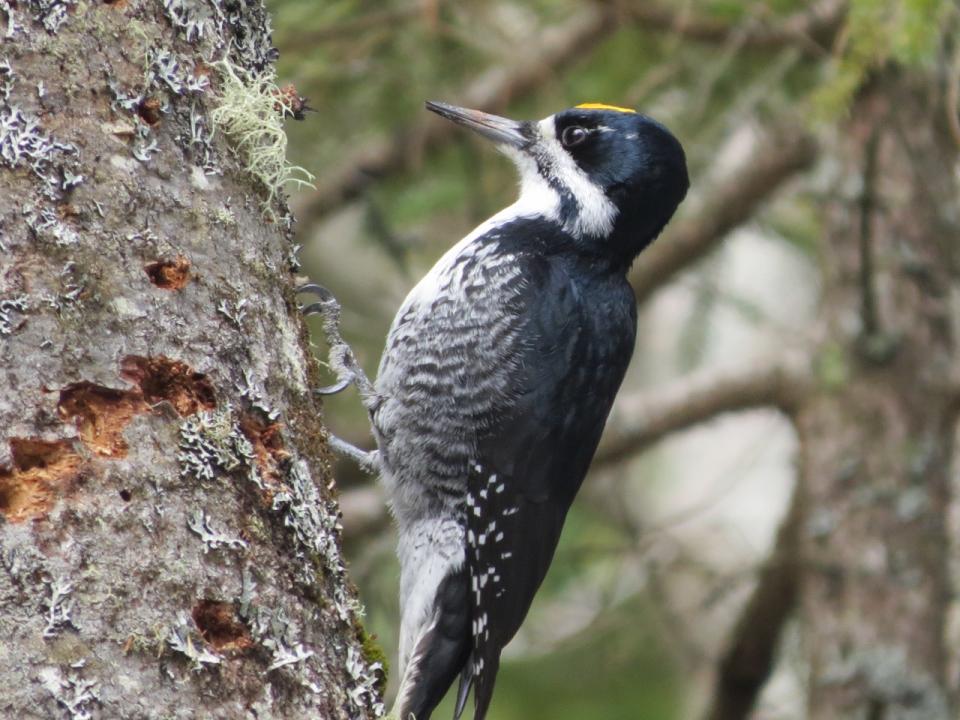
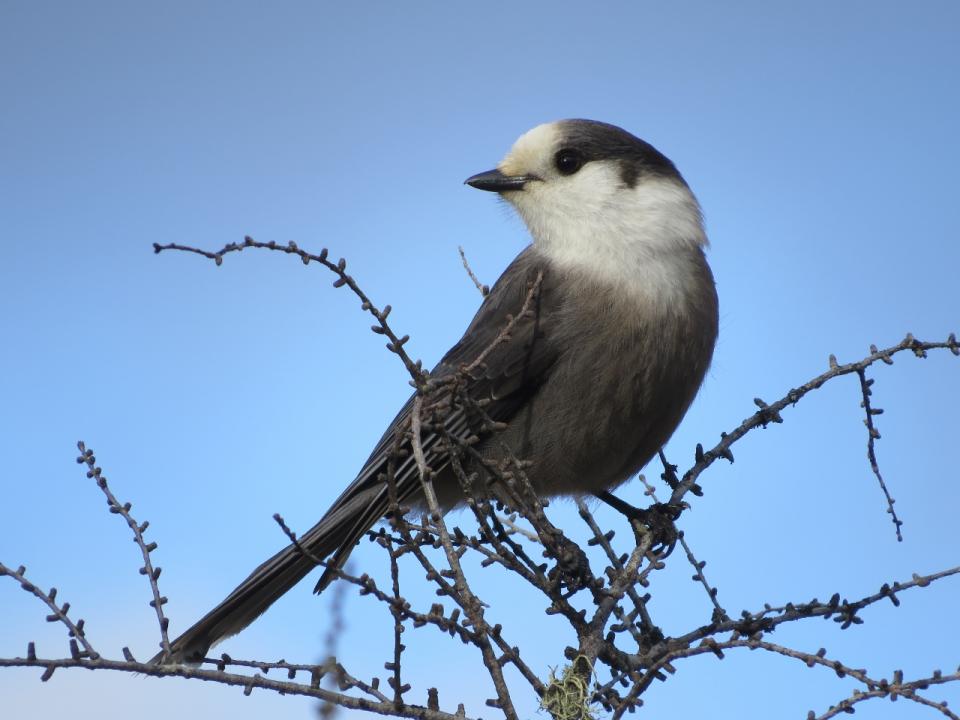
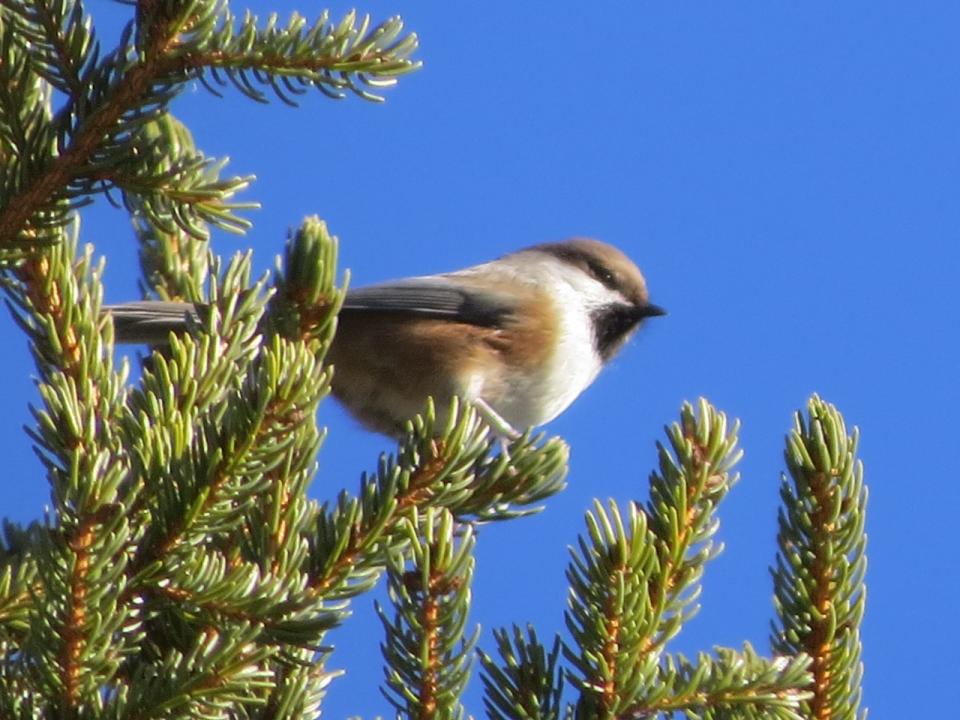
Locations for winter birding
Given the irruptive fruit-eating species that are already showing up in the central Adirondacks, check the fruit trees in the local villages and towns. I am regularly observing Bohemian Waxwings and Pine Grosbeaks in Long Lake and many other surrounding towns. In a recent winter, Big Brook Road in Indian Lake was a great location to find Bohemian Waxwings. Evening Grosbeaks have occasionally visited our Long Lake feeders this season, and there are many reports from other towns. Common Redpolls generally show up at feeders anywhere from late November to late January in irruptive years, and I already observed a flock in Tupper Lake feeding on Birch catkins. So keep an eye on feeder locations for finches.
Some of the remote boreal habitat locations, such as Moose River Plains in Inlet, are not plowed in winter, but some can be accessed on skis or snowshoes, such as Ferd’s Bog in Raquette Lake, and the Northville-Placid Trail (S) in Long Lake. Fortunately, there are plenty of easily-birded roadside boreal habitat areas that can be accessed by car. One of my favorite locations is Sabattis Circle Road in Long Lake. I feed friendly Canada Jays in three Long Lake locations – one along Route 30, and two along Sabattis Circle Road (the Round Lake Trailhead and Sabattis Bog). Black-backed Woodpeckers can also be found along Route 30 and Sabattis Circle Road. Boreal Chickadees can be found along Route 30 in Long Lake. There is also extensive roadside boreal habitat in Newcomb, Minerva, and North Hudson.
Winter birding in the central Adirondacks is always exciting! Warm up in one of the many welcoming lodgings and great places to dine during your visit.


